The land of lakes and volcanos, as it’s called, is considered to be the ‘Costa Rica of 30 years ago’. Before our trip though, all I had really heard about Nicaragua was that there was good surfing.
Instead, I was greeted by colorful colonial cities with lots of history, cultural activities, friendly people, lush nature, interesting wildlife, and volcanoes!
There are lots of things to do in Nicaragua, but first, the essential information…
The Essential Info
When to visit
Watch out if you are planning on traveling in February – the wind was INSANE when we went at that time! Each day the wind peaked at about 25-30 knots, which made it slightly unpleasant (the good news is that it’s offshore winds, so the beach is still enticing).
November through January are probably the most coveted months in terms of weather because the landscape is green, there’s very little rain, the temperatures drop a bit and the breeze picks up.
March and April (the end of the dry season) bring higher temperatures, plenty of sun and are the driest months out of the whole year… great for events and vacation.
May through October (during the green season) there are still plenty of days of sunshine and really long stretches without rain.
There is a mini-dry season that lasts for a few weeks in July called ‘La Canicula’. During the green season, the landscape is green and lush, the air is nice and fresh and the occasional rain cools things off.
Late September and especially October are the rainiest months, so I would think twice about visiting then. It’s peak hurricane season too, so even if the prices are cheap, it’s for a reason.
This link is geared towards surf but gives a pretty good description of the seasons.
Arriving in Nicaragua
We flew 2.5 hours from Miami to Managua – the only International Airport in Nicaragua. It cost about $400 return per person, or 15,000 points (we used points).
We didn’t need a visa for Americans or Australians – you’ll just be asked why you are and be asked to pay $10 USD per person. Cheap!
Currency
The Nicaragua currency is called the Cordoba – it’s about 30 Cordobas to $1 USD. To be honest, we didn’t exchange money. The US dollar was widely accepted where we went and they would give us change in Cordobas. This only works in the tourist places – if you’re traveling through the countryside, you’ll need Cordobas.
I recommend bringing cash with you (for two people for 7 days, bring $700 – $1,000 just to be safe).
You can exchange money in one of the towns. Outside of banks, you’ll see men wearing badges with wads of cash and different currencies in their hands. It looks shady, but I’m told it’s completely legitimate. Just count how much money you need beforehand so you can make sure you are getting the proper exchange rate.
Is Nicaragua Safe?
I’ll admit I had heard some horror stories from friends, such as people stealing your bags or surfboards from the back of your truck when you stop at stop signs and corrupt cops stopping you on the road.
Of course, you need to be aware of your surroundings, but I felt very safe while there. Nothing bad happened. It obviously helps if you can speak fluent Spanish with the locals, but my Spanglish got us around fine. You’ll find most people speak English in the main tourist cities.
Will my US phone work?
If you are on the T-Mobile One plan then YES! I had access to internet and text messages but would be charged if I made a call.
Otherwise, call your carrier beforehand and find out what roaming packages will cost you.
Getting Around Nicaragua
There are two ways – rent a car or ride on the buses (I think they are called ‘Chicken Buses’ because you’re packed in there like chickens :/). They are old American school buses that have been driven all the way down to Central America. They pack people in, but it’s probably a cheap way to get around.
We rented a car and split the cost of $411 USD between 4 of us. In terms of rental cars, that is pretty expensive, but Nicaragua has a mandatory insurance they make you buy. So don’t purchase the insurance online beforehand. We did that, but it’s redundant (damn rental companies!)
We were ‘upgraded’ to a Toyota Hilux which turned out to be a necessity – many roads are dirt and the 4WD came in very handy at times.
What to Pack
- Take a backpack as your main bag – A roller suitcase on the dirt roads will be a nuisance.
- Daypack – I have one that folds up very small, but it’s great for walking around the streets with your phone, wallet, sunblock, travel guides, maps, etc.
- Toiletries – For my female readers, take extra necessities like feminine hygiene products or even ponytail holders. They were an absolute pain to find!
- Hiking Boots – You can hike the many volcanos in Nicaragua.
- Havianas – You’ll want these near the coast
- Day shoes – I love my Tom’s shoes for this! They slip on, are lightweight and easy to pack. Plus they are easy to take off in the airport security lines.
- A few pairs of t-shirts and shorts
- 1 pair of jeans or leggings
- 2 jumpsuits – I love these because they can be dressed up or down
- Bikini for those beach days (I packed 3 but we spent most of our time in them!)
- Waterproof jacket for when it rains
- 1 sweater – It can get windy or cool at night depending on the time of year
- BUG SPRAY and Sunscreen! These are essentials!
- Essential oils and my DIY Peppermint Spray
Recommended article – What essential oils should I pack?
What’s the food like?
It’s pretty basic – lots of rice and meat and fish, but it’s fresh and tastes good.
Drink bottled water and stay away from the ice unless you know you are in a hotel or a restaurant that serves filtered ice.
Things to do in Nicaragua
Granada
1 hour southeast of Managua lies a beautiful colonial city called Granada. It’s a very old city and well-known port from the 1500’s and is famous for surviving many pirate attacks!
While there, visit the La Isletes. These beautiful islands surround Granada and are home to gorgeous Haciendas and interesting wildlife. You can take a private boat tour for about $15USD per person.
- La Isletes Boat Tour
- Monkeys in Nicaragua
- Granada, Nicaragua
- Granada Bell Tower
Stop by the Garden Cafe to eat – I really love the gardens and the food was fresh and delicious. They have a bookstore and book exchange there too!
Visit the top of the Belltower – $3USD entry per person. GREAT view of the city and the volcanoes.
We stayed at La Islita Boutique – highly recommend this place! It was about $85USD per night but could fit 6 people in a room, which makes it more affordable. Breakfast is included and they even have a pool and a rooftop with a view.
Masaya Volcano
Did you know that Nicaragua has 19 volcanoes?!?
If you don’t want to hike some of the long treks to see an active volcano, you can just drive up to this one. It’s a national park and costs you $4 USD per person entry fee. You’ll drive through the lava fields up to the crater but can only stay for 10 minutes (it sounds short, but you really won’t enjoy the smell of the gases). It sounds like a rushing river when you are close to it. If you go at night, the entry is $10USD per person, but you can see the glowing lava inside it.
Volcano Boarding
After Granada, head over to Leon and go Volcano Boarding at Cerro Negro Volcano.
Here’s a great resource for this activity.
Ometepe
Ometepe is apparently another beautiful place to visit.
Here’s a great resource on what to do in Ometepe.
Visit the best beaches on the Emerald Coast
- Magnifique Rock, Popoyo
- Hacienda Iguanas Nicaragua
- Sunset Horeseback Riding
You’ll find some amazing and beautiful hidden beaches coveted by surfers and tourists down in the Emerald Coast. And the sunsets over the Pacific Ocean are BEAUTIFUL!
It takes about 2.5 hours to drive from Managua and will take you through the countryside. Don’t be surprised by the horses, chickens, and pigs roaming the roads!
We stayed in Hacienda Iguana, which is a beach and golf club. You can rent houses or villas on VRBO.com or airbnb.com and it’s quite affordable.
Surfers love Hacienda Iguana because of the world-class surf breaks, Panga Drops and Playa Colorado. Some of the units and houses literally face the surf break – it’s a surfer’s dream!
Things to do at Hacienda Iguana
- Yoga
- Horseback riding – It’s amazing to be galloping on a beach at sunset!
- Surf Panga Drops or Playa Colorado
- Volleyball
- Sunset drinks at the sunset bar
- 9 hole golf scramble – 2.30pm on Wednesdays that ends with food and drinks.
I highly recommend checking out Rancho Santana – remote luxury at it’s finest. Just call ahead and book a lunch reservation so you can see the property.
We kept heading south to Popoyo (it’s another surf break) and visited Magnifique rock. There’s a hostel there on the hill and they have events and a place you can eat with an AMAZING view!
So here are few things to do in Nicaragua. We were short on time, so couldn’t see everything on the Emerald Coast, but here’s a great article to tell you about the hotspots.
How long do you need to visit Nicaragua?
We were there for 6 days and it was too short. If you’re very well planned, you could probably see most of the all of the main sites in 2 weeks.
Trip Cost (USD):
All costs are per person. Note, these could vary depending on your itinerary but this is what we spent doing most of the above activities. PS – We did this trip on a budget, but you could do it way cheaper if you stay in hostels and don’t get a cook :)
- Flights – $400 RT or 15,000 points from Miami
- Visa – $10
- Rental Car – $102
- Accommodation – $220 including cleaning service (3 bedroom villa that sleeps 6 people)
- Chef and all meals prepared – $180 per person for the week
- Incidentals – $100
- Surfboard rental – $60 – $75 pp for the week
- Activities (Golf, Horseback Riding) – $150
Total Cost: About $1,100 per person
Have you ever been to Nicaragua? Where else did you visit?
If you’re planning on heading down to Nicaragua leave a comment and let me know :)


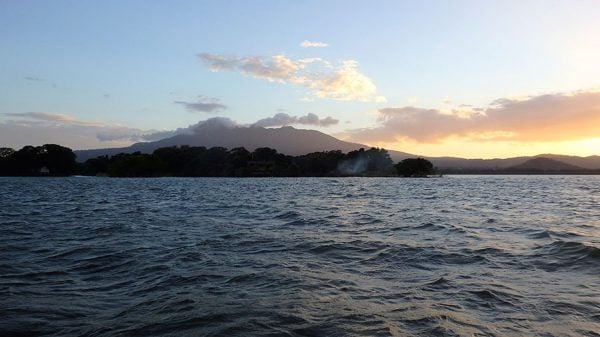
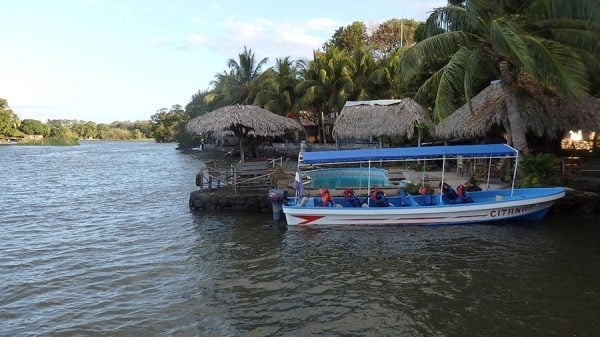


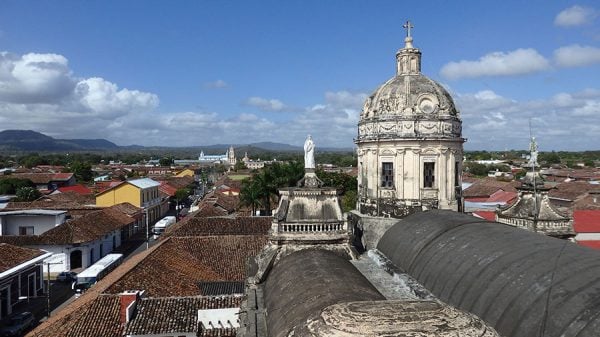

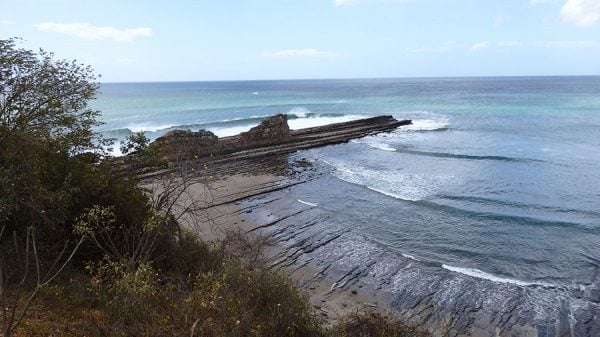

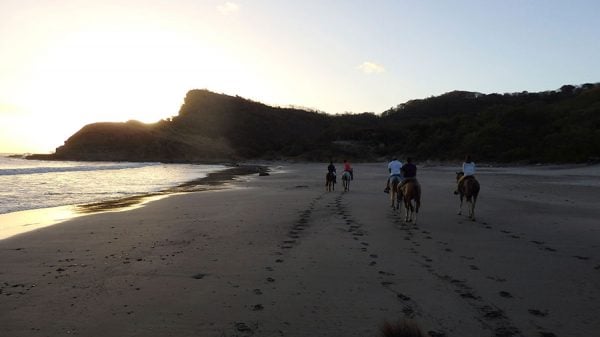
0 Comments